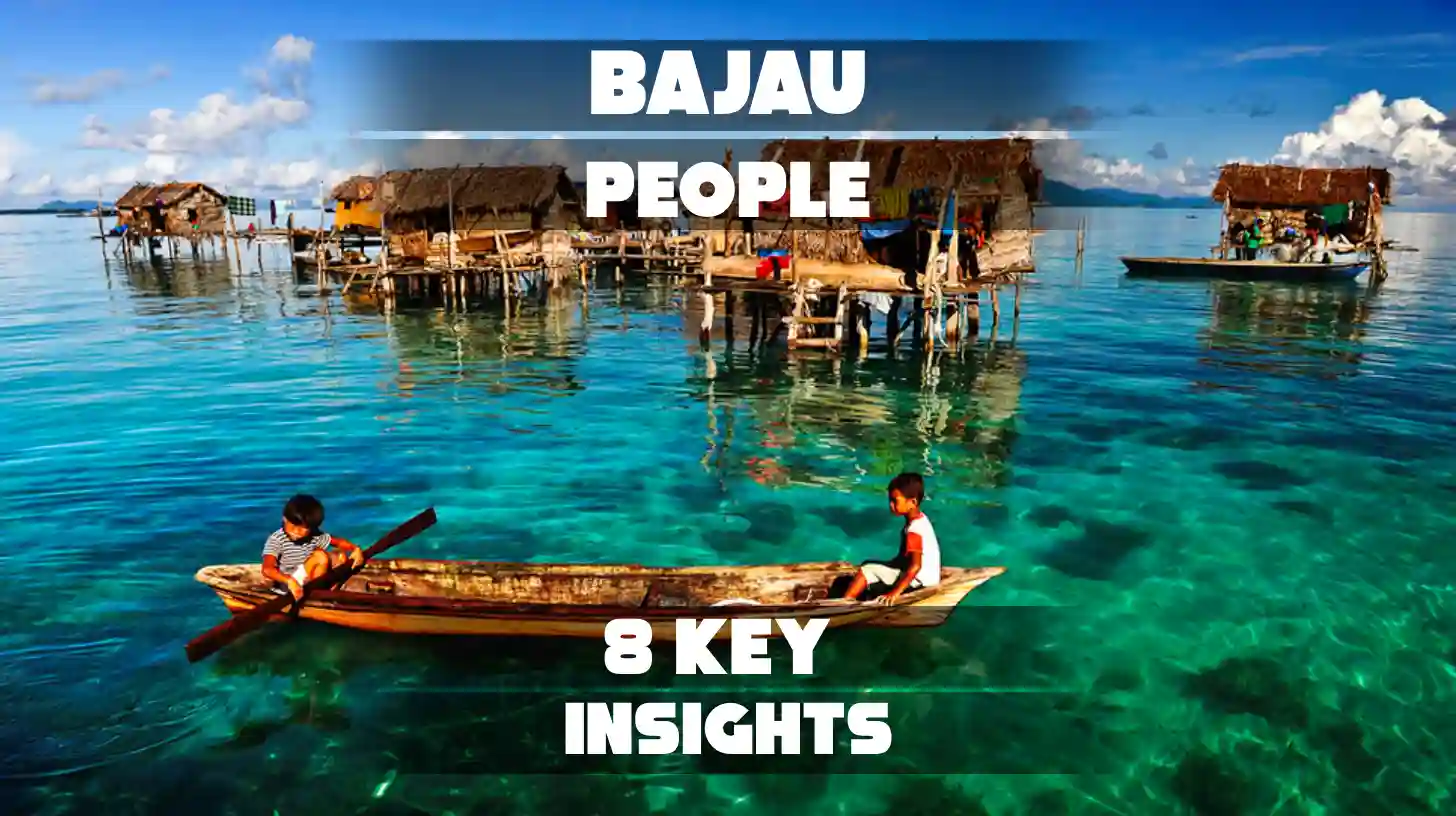Have you ever wondered how some people live their entire lives on the open sea? The Bajau people, often called sea gypsies, have a unique lifestyle shaped by centuries of ocean survival.
In this article, you’ll learn about:
- Their history and migration across Southeast Asia.
- Incredible diving abilities and physiological adaptations.
- Cultural rituals and traditional lifestyles centered around the sea.
- The challenges they face in a rapidly changing world.
By following this journey, you’ll gain insights into the Bajau people’s resilience and deep connection to the ocean.
- 1. History and Origins of the Bajau People
- 2. Life of the Bajau Sea Nomads
- 3. Bajau People’s Incredible Diving Abilities
- 4. Bajau People’s Beliefs, Rituals, and Culture
- 5. Physical Appearance of the Bajau People
- 6. Challenges Faced by the Sea Gypsies
- 7. Geography and Distribution of the Bajau People
- 8. Bajau People’s Food Culture
- Bajau People: A Recap
- FAQ
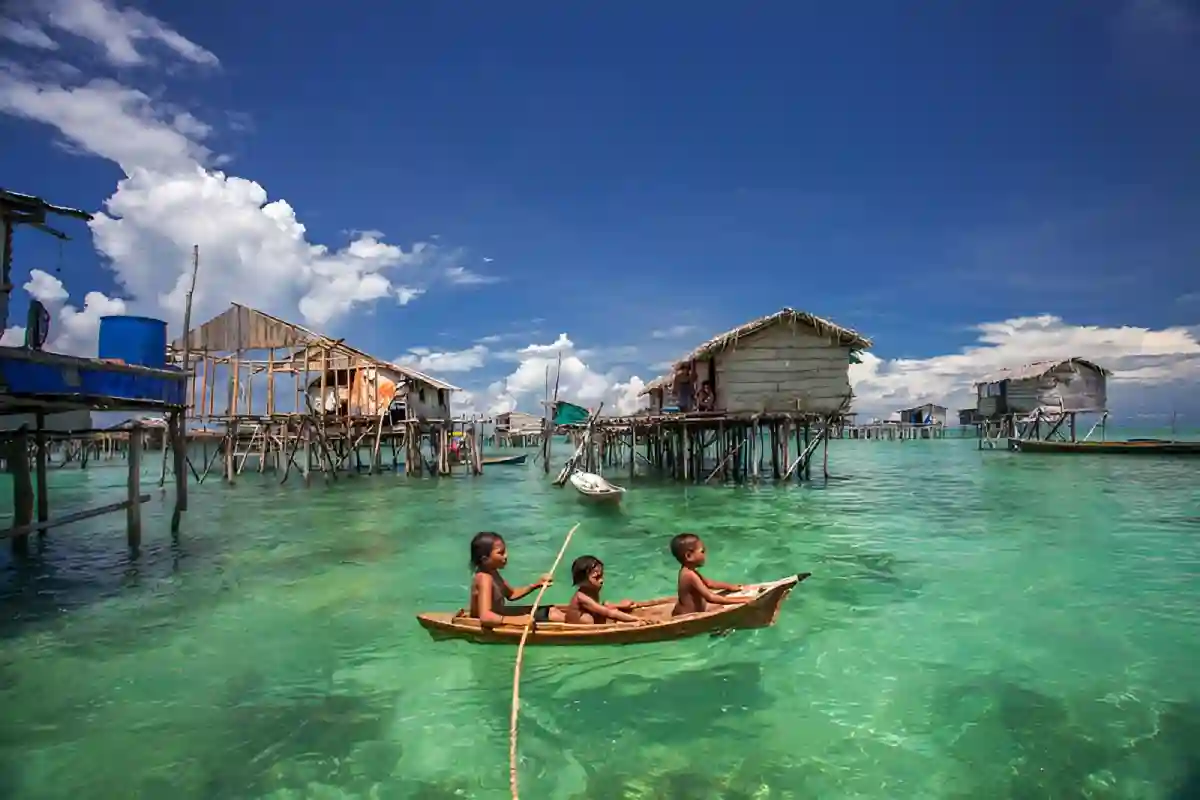
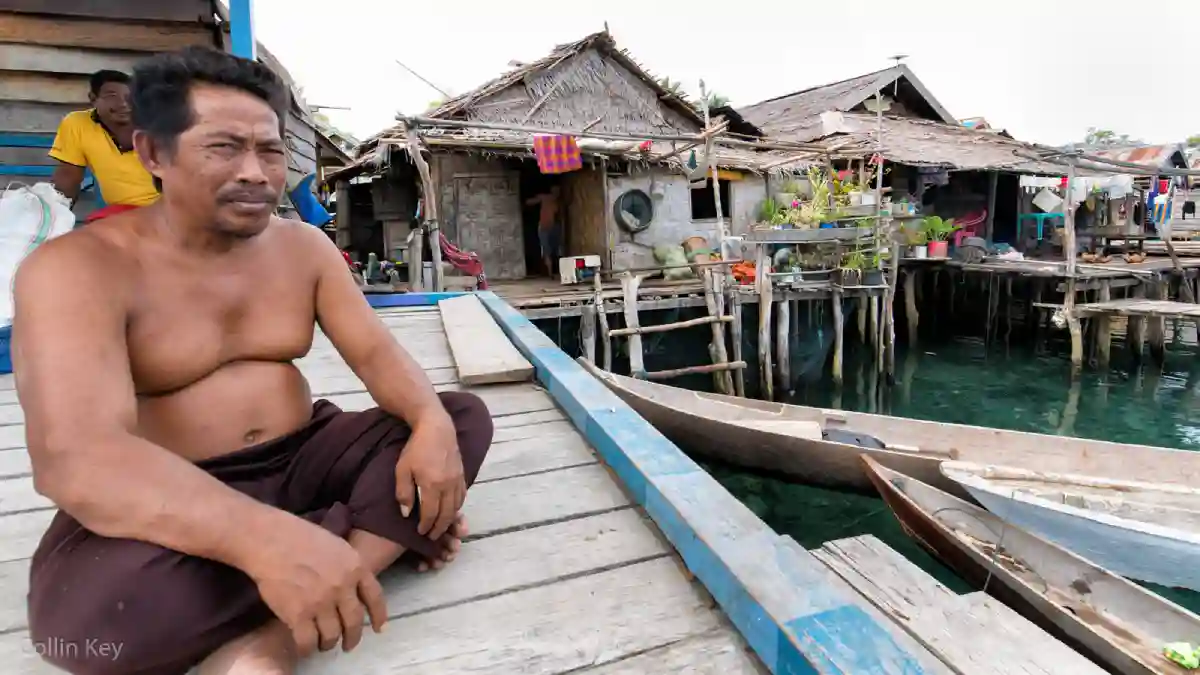
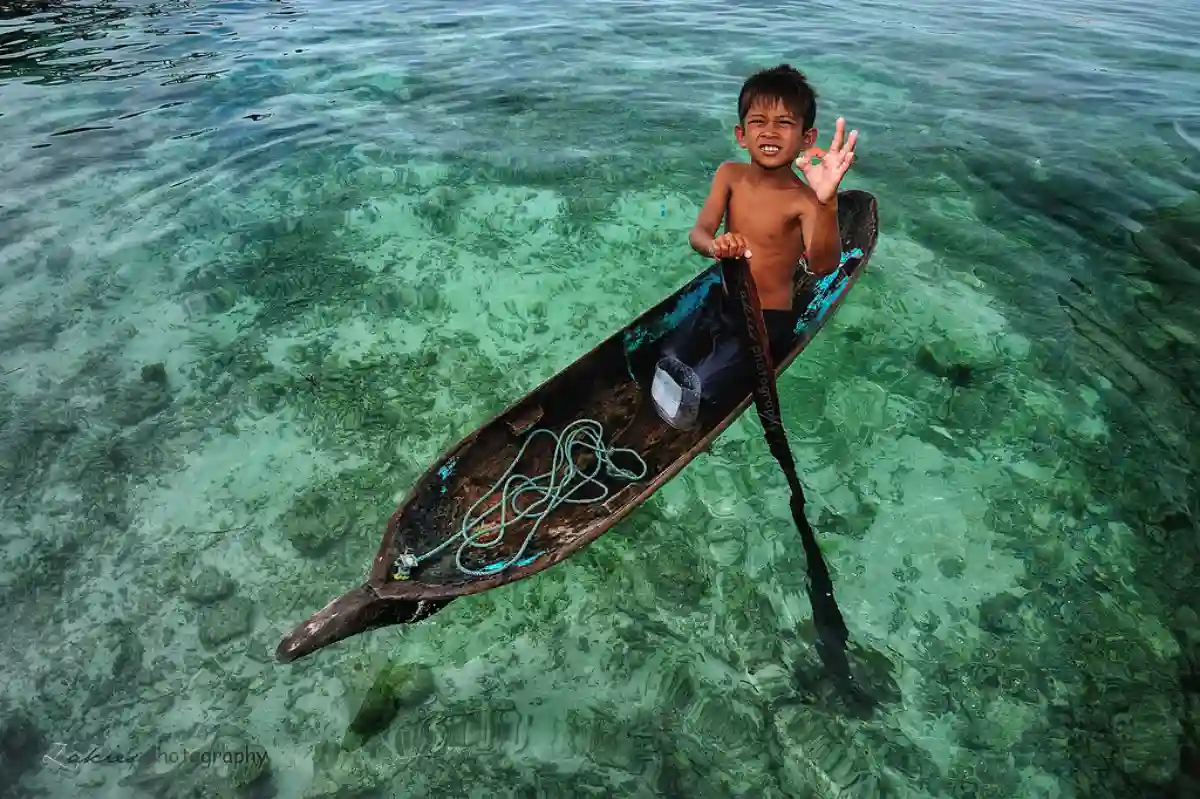
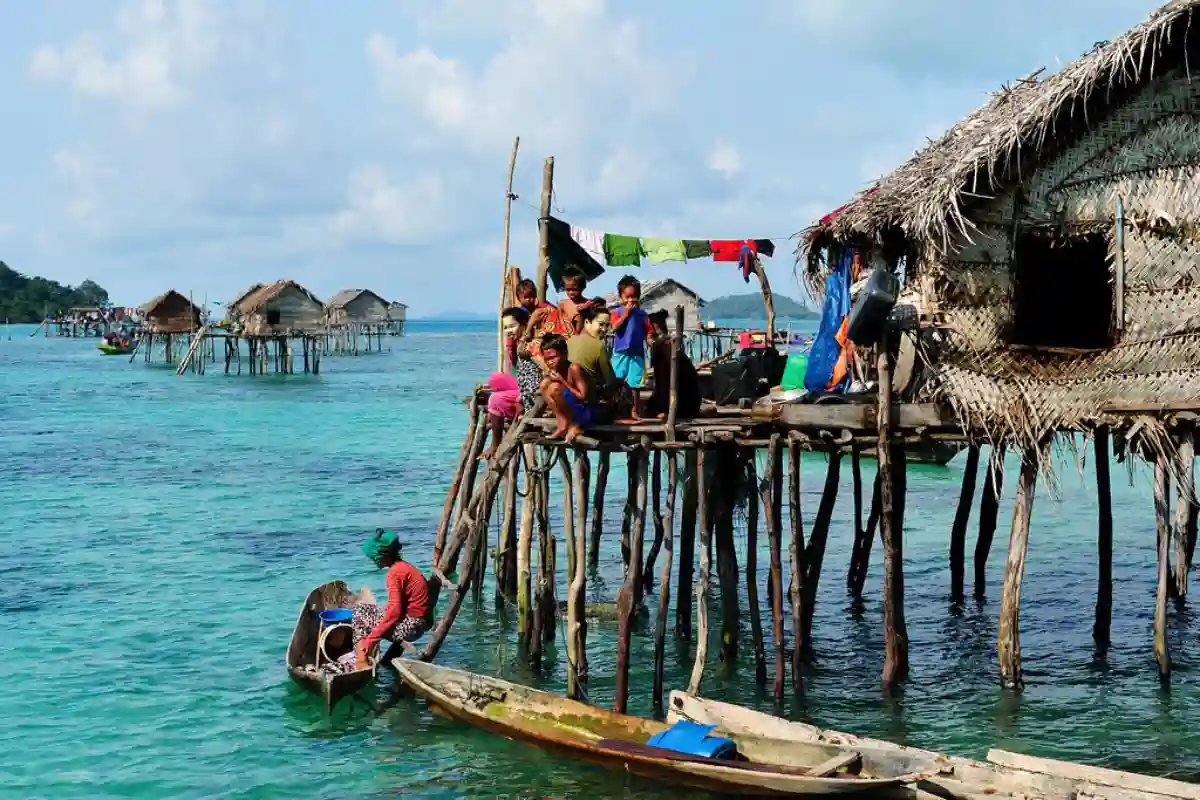
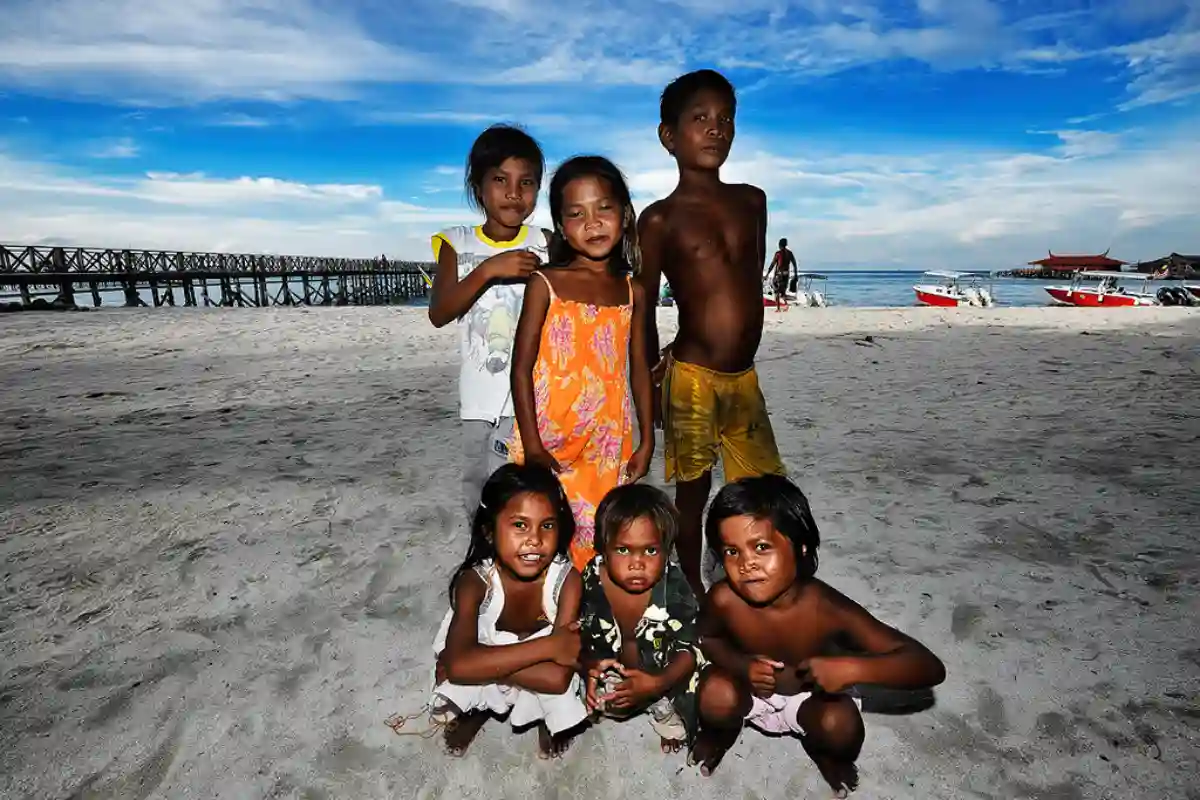
1. History and Origins of the Bajau People
The Bajau Laut, also known as sea nomads, have a long history that began in the Philippines. They moved to Malaysia, Indonesia, and other coastal places. Living on islands or in stilt homes above the water, the Bajau rely on the sea to survive. They are known for their amazing diving skills, able to hold their breath longer than most humans.
Their connection with the sea makes them a mysterious ethnic group. Many people are curious about their way of life, and visiting the Bajau Laut gives us a chance to learn about this unique culture. They continue their journey as sea nomads, moving between islands and villages, teaching children the ways of the sea.
The distance they travel is not always easy, but they stay calm and act with skill. The night brings rest after their long days of diving and fishing.
See Also What Do Indonesian People Look Like?
2. Life of the Bajau Sea Nomads

The Bajau Laut, also called sea gypsies, live mostly on the ocean. The Sama Bajau people, part of this group, are known for their amazing diving and fishing skills, passed down through generations.
- Floating Villages: The Bajau live in stilt homes, called lepa-lepa, above the ocean. These homes are built in shallow coastal areas and protect them from the challenges of island life.
- Life on the Boat: Many Bajau Laut still live on boats, using them for fishing and travel. The boats are key to their nomadic lifestyle, helping them stay connected with family and community.
- Maritime Skills: Young Bajau are taught to dive, breathe underwater, and fish from a young age. These skills are vital for survival, showing the Bajau’s special bond with the ocean. Their journey as divers and sea nomads is a unique part of their culture.
See Also What Do Filipino People Look Like?
3. Bajau People’s Incredible Diving Abilities
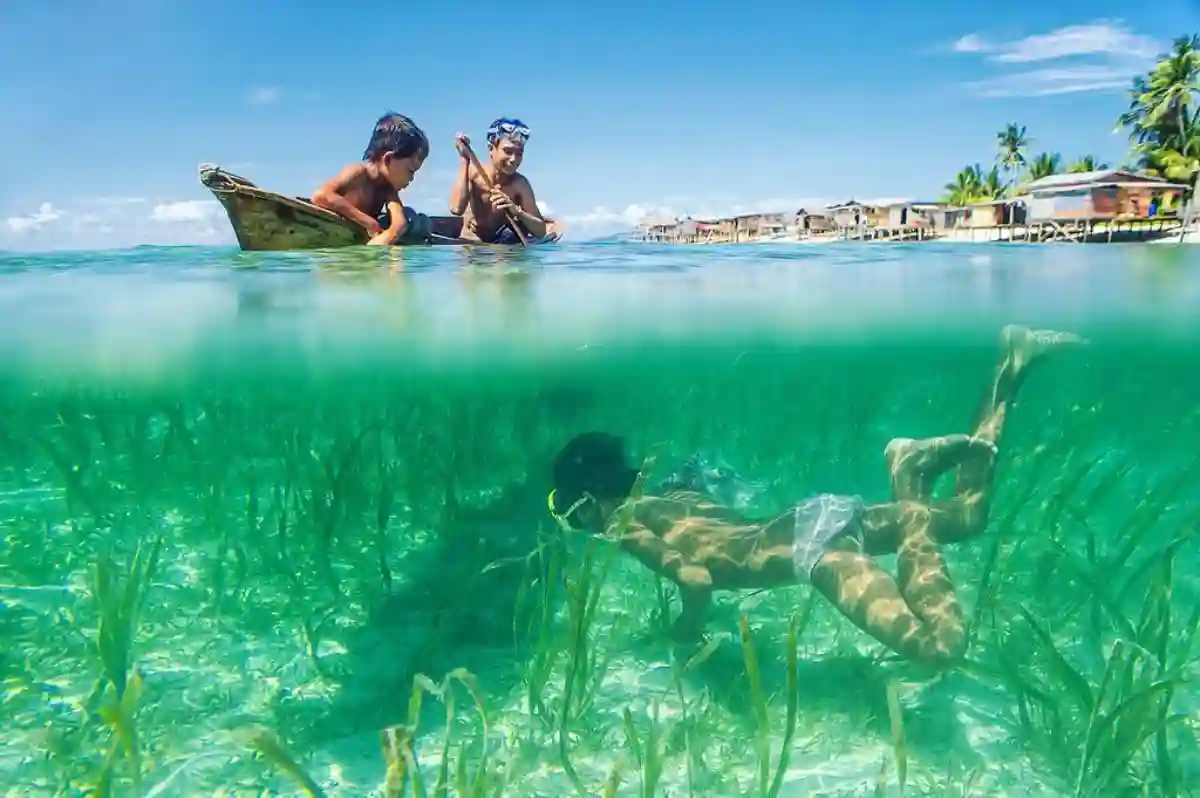
The Bajau people, often called sea gypsies, are known for their amazing free-diving abilities, passed down through generations. Their deep connection with the sea enables them to perform incredible feats underwater.
- Extraordinary Diving Skills: Bajau divers can hold their breath for several minutes and dive deep into the ocean, often without any equipment. This remarkable ability helps them gather fish and other resources from the sea floor.
- Physiological Adaptations: Over time, the Bajau Laut have developed unique traits. Their spleen contracts, helping them store more oxygen and dive longer and deeper. This genetic adaptation is a key to their survival.
- Spear Fishing & Underwater Resource Collection: Spear fishing is a vital part of Bajau life. They skillfully hunt fish, collect shellfish, and gather other underwater resources, relying only on their diving ability to survive.
4. Bajau People’s Beliefs, Rituals, and Culture
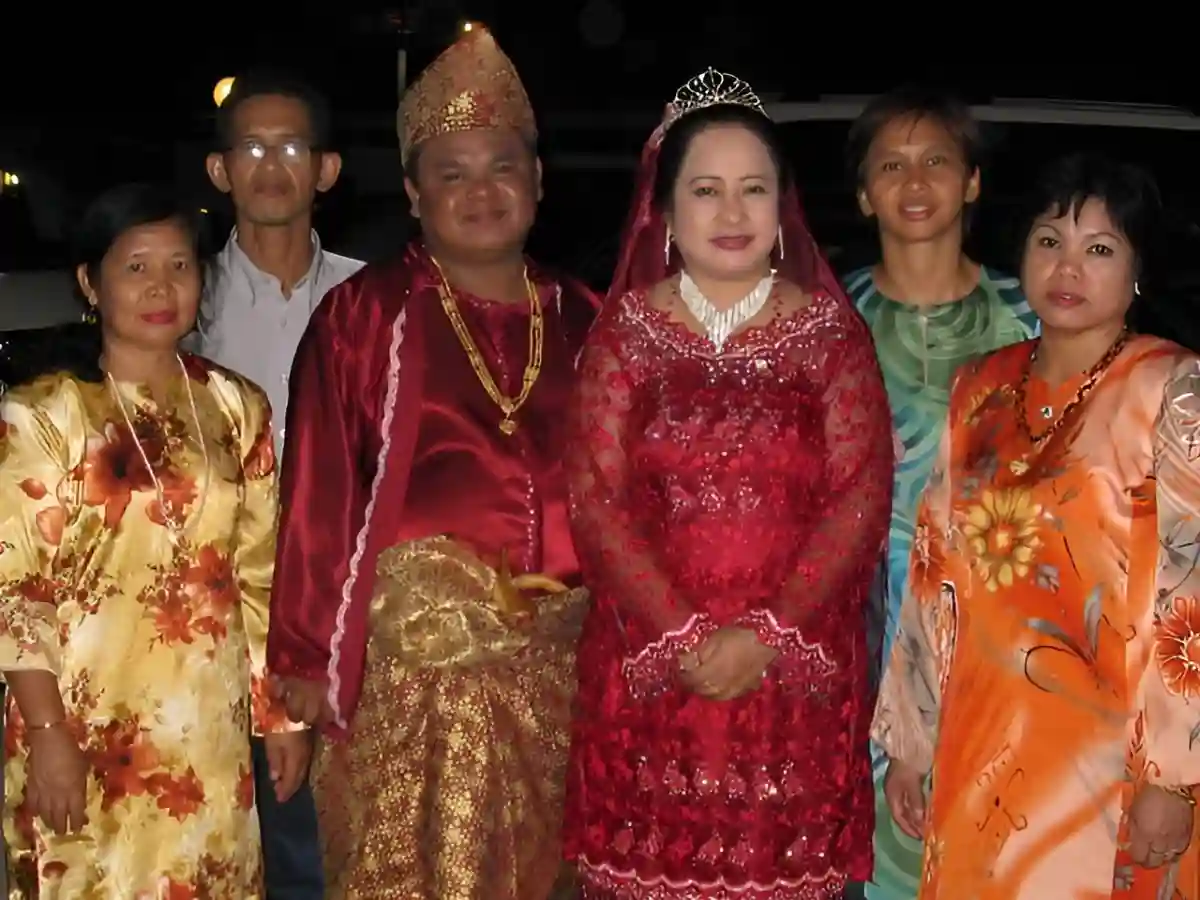
The Bajau people, known as sea gypsies, have a rich culture deeply tied to the ocean. Their spiritual beliefs center around the sea, which they view as home to ancestral spirits. They believe that offering respect and prayers to the ocean ensures protection and prosperity. A key ritual is the boat blessing, where Bajau offer prayers before fishing trips.
Their festivals celebrate their maritime lifestyle with traditional dances, songs, and feasts. The Sama Bajau community also shares these traditions, reinforcing family bonds and respect for the sea.
Bajau children are taught to dive and fish from a young age, inheriting survival skills passed down through generations. Despite modern challenges, the Bajau continue to live in harmony with the ocean, keeping their traditions alive and protecting their cultural identity.
See Also What Do Japanese People Look Like?
5. Physical Appearance of the Bajau People

The Bajau people have remarkable physical traits shaped by their close connection to the sea. Living on Tabbalanos Island and other remote islands, they have adapted to diving for survival, with one key adaptation being a larger spleen. This allows them to store more oxygen, helping them hold their breath longer and dive deeper.
Compared to other groups, the Bajau have a shorter, compact frame, which aids in swimming and diving. Their tanned skin from years in the sun is another distinct feature. These traits make them stand out as mysterious people with a unique way of life.
For science enthusiasts, it’s fascinating to see how these adaptations have evolved over generations. Despite the challenges, the Bajau continue to speak through their traditions and act in harmony with the ocean. Finally, their survival depends on their ability to adapt to both land and sea.
6. Challenges Faced by the Sea Gypsies

The Bajau Laut people face many challenges that impact their way of life and the environment. Living on remote islands, they depend on the ocean, but overfishing and coral reef damage have reduced their fish supply and harmed the marine life they rely on. This makes it harder for them to stay calm and care for their families.
Young Bajau also deal with issues like limited access to education and healthcare. Many still live in stilt homes or on boats, making it hard to reach basic services. With globalization and more visitors, their traditional nomadic lifestyle is changing. Scientists say the Sama Bajau culture is at risk. As their way of life evolves, the Bajau people are finding ways to protect their identity and keep their traditions alive.
See Also What Do Lebanese People Look Like?
7. Geography and Distribution of the Bajau People

The Bajau people, often called sea gypsies, live in stilt homes or on boats, staying close to the ocean. They live primarily in the Philippines, Malaysia, and Indonesia, where they are known as bajau sea nomads. These mysterious people have adapted their way of life to the sea. They spend most of their time on the water, diving and fishing.
The Bajau divers are famous for their ability to breathe longer underwater, a skill they pass on to their kids. Their unique genetic adaptations help them dive deep and stay underwater for extended periods.
Their presence on small islands and remote coastal regions allows them to maintain their ancient sea nomadic lifestyle. As visitors arrive to learn about their way of life, the Bajau continue their journey as one of the most fascinating and adaptable groups of humans.
8. Bajau People’s Food Culture

The Sea Gypsies, or Bajau sea nomads, have a food culture that is deeply connected to the ocean. Seafood, such as fish, shellfish, and seaweed, plays a central role in their diet. These foods are caught using traditional methods like free diving and spear fishing, skills passed down through generations of Bajau divers. Thanks to their genetic adaptations, they can breathe longer and dive deeper than most humans.
The Bajau people live primarily in stilt homes on islands, but their connection to the sea shapes their whole way of life. During festivals and ceremonies, like boat blessings, they prepare special dishes that showcase their bond with the ocean. Visitors are always curious to learn about their way of life. These mysterious people continue to evolve as they proceed on their journey, living in harmony with the sea.

Bajau People: A Recap
The Bajau, also known as sea gypsies, are an ethnic group found in the southern Philippines, Malaysia, and Indonesia. Living primarily on small islands or in stilt houses above the ocean, the Bajau Laut have developed exceptional diving skills. Thanks to their genetic adaptations, they can hold their breath for extended periods, allowing them to dive deeper and longer than most humans.
Their lifestyle revolves around the sea, using boats for fishing, travel, and shelter. The Sama Bajau people pass down maritime skills, with kids learning to dive from an early age. Despite facing challenges like environmental damage and globalization, the Bajau maintain a strong bond with the sea, evolving while preserving their traditions. Visitors often marvel at their unique way of life. The Bajau continue to thrive, always adapting and protecting their culture.


